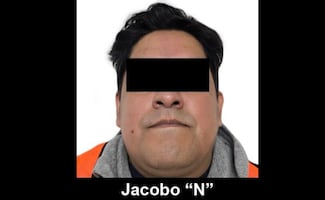Más Información

Vinculan a proceso a "El Yeicob", socio del empresario Raúl Rocha, por delincuencia organizada; le dictan prisión preventiva

Vinculan a proceso a "El Limones" por narcotráfico y posesión de armas; continúa en prisión en el Altiplano

UIF respalda sanciones de EU contra el Cártel de Santa Rosa de Lima; fortalece esfuerzos conjuntos para reducir criminalidad, destaca
The Drug Enforcement Administration (DEA) of the United States declared Mexico is the “primary source” of heroin for the U.S. market, with an increasing poppy cultivation which has tripled in the last three years.
According to the National Drug Threat Assessment Summary , the DEA blames the significant increase in production on the decrease of poppy fields eradication in Mexican territory, as well as the focus of the cartels on heroin trafficking.
The report details there are six drug cartels who have a presence and impact in several areas of the United States: the Sinaloa cartel – led until recently by Joaquín "El Chapo" Guzmán, who is currently imprisoned in New York; the Jalisco New Generation Cartel; the Juárez Cartel, the Gulf Cartel, Los Zetas Cartel, and the Beltrán-Leyva Organization.
Pursuant to the document, the DEA highlights in 2016 poppy cultivation reached 32,000 hectares in Mexico, capable of producing 81 metric tons of heroin. Three years before, the cultivation only allowed the production of 26 metric tons.
Mexico, the predominant source
The report details in 2015, 93% of the heroin seized and analyzed by the DEA came from Mexico. “The increases in heroin production in Mexico have ensured a reliable supply of low-cost heroin ,” explains the administration. They stress the heroin consumed in the U.S. is pure, low-cost, and mixed with fentanyl – a known synthetic opioid developed to serve as a painkiller.
For the United States, this is a matter of great concern, given the drug crisis they're undergoing. Between 2008 and 2015, the deaths from heroin overdose in this country have tripled, reaching almost 13, 000.
It is expected that this week, American President Donald Trump declares the opioid epidemic and the controlled prescription drug overdose a ”national emergency”.
Mexican cartels remain the most important drug trafficking threat in the U.S. and their influence over the territory is expanding. According to the report, “no other groups are currently positioned to challenge” Mexican drug cartel organizations.
Furthermore, the report states Mexican cartels dominate the heroin, methamphetamine, cocaine, marijuana, and “to a lesser extent”, fentanyl markets.
The strategy and tactics implemented by the drug traffickers remain unchanged: they keep gaining influence at small-scale distribution networks thanks to a greater interaction with local gangs, which means cartels don't have to directly sell their products in the streets, thus avoiding arrests and money and product seizures by the authorities.
Moreover, the lack of direct violence and the low profile of the cartel leaders in the U.S. makes them less “visible” to the eyes of the authorities in the country; a stark contrast to what happens in Mexican territory, where the DEA considers drug violence has reached “epidemic proportions.”
Trafficking methods continue being the known ones: border crossing points, underground tunnels, and the use of drones – not only for smuggling but also as a surveillance system.
As the report states, it's not a widely used tactic to launch products over the border wall, contrary to what President Trump claims to justify the construction of a “high and beautiful” wall on the border between Mexico and the United States as a measure to stop drug trafficking.
am
Noticias según tus intereses
[Publicidad]
[Publicidad]











